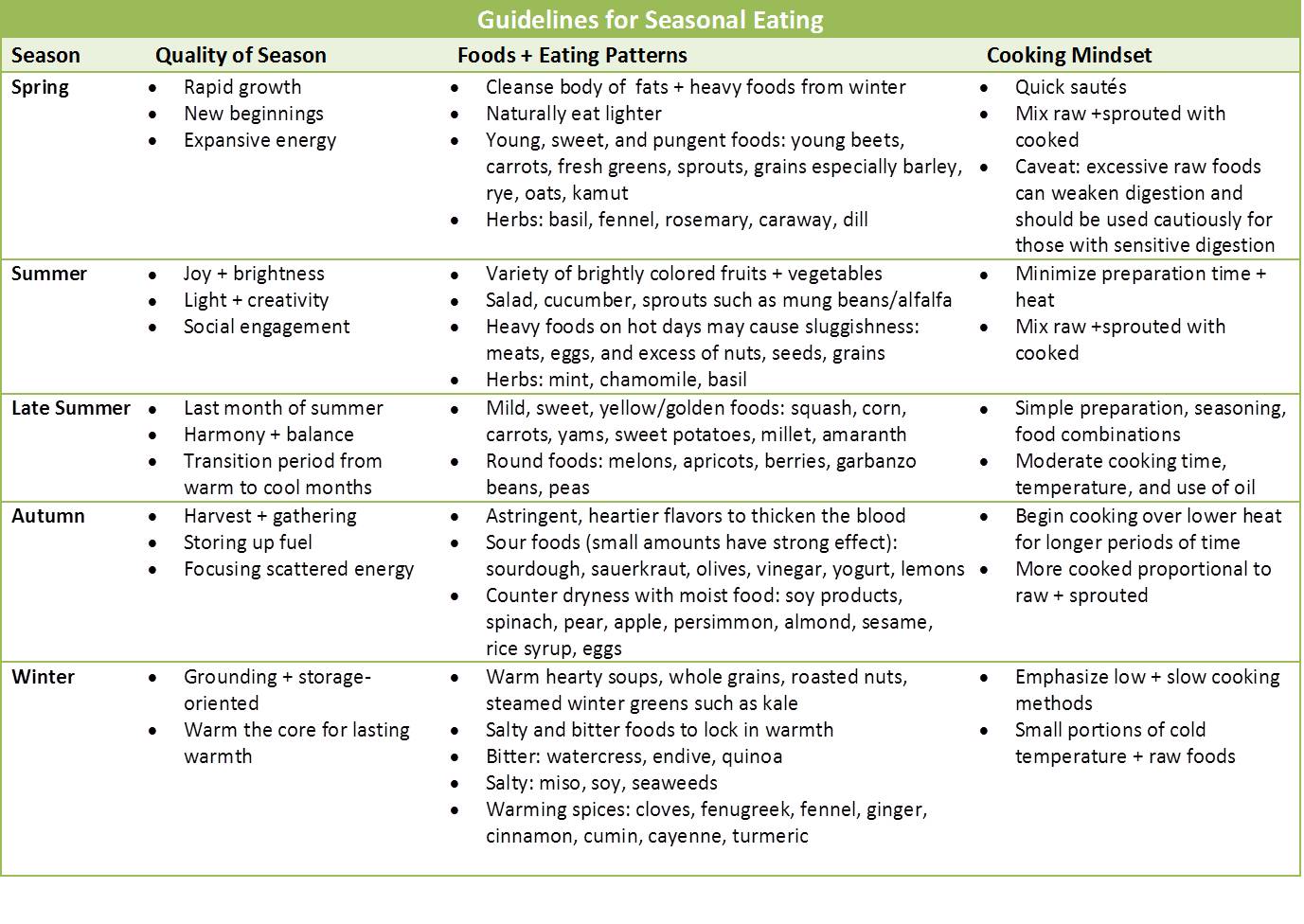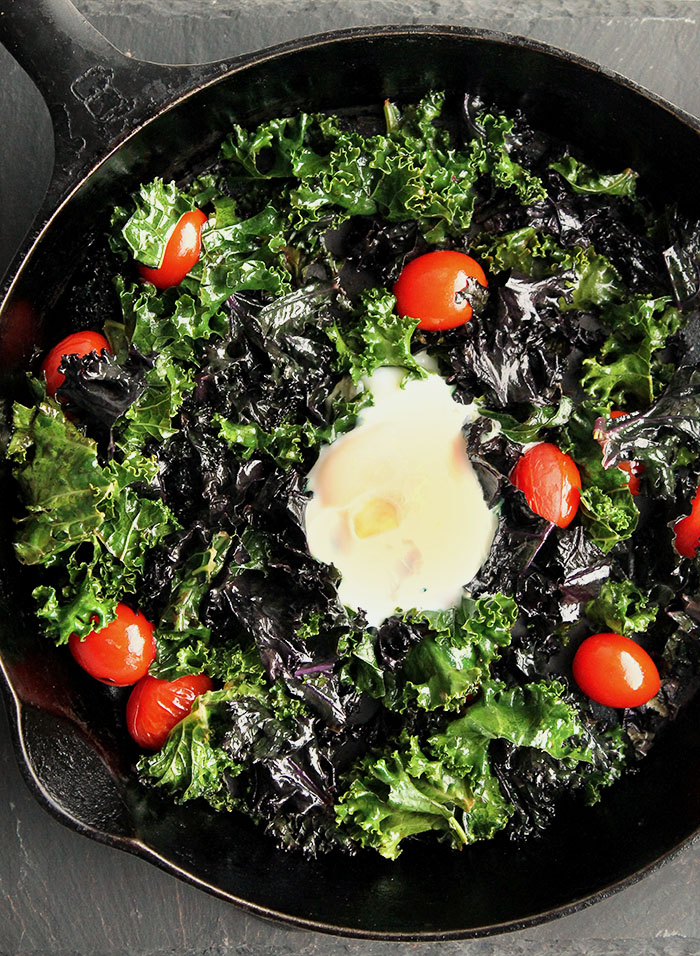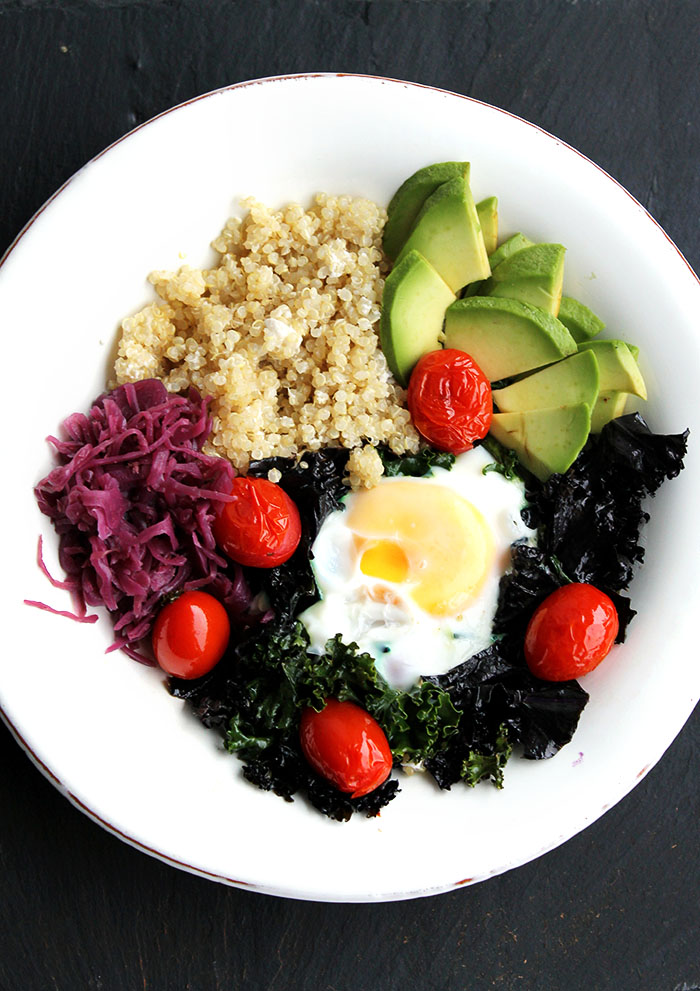
Today’s post comes to you from Katie Schmidt, a health coach I met through blogging but who also studying at the Institute of Integrative Nutrition (IIN) around the same time as me. Ever since, I have been keeping an eager eye on my inbox receive notification that a new post has gone up on Katie’s site Whole Nourishment. Katie’s recipes are refreshingly simple yet delicious (I’ve cooked quite a few of her recipes now, and many have since become household staples in our house) and I love her holistic approach to healthy eating.
* * * * * * * *
If I had to identify one change I’ve made over the years that has had the greatest impact on maintaining a steady weight and feeling good in my body and about my body, it would be mindful eating – also known as intuitive eating. That’s right, it’s not the green smoothies, chia seeds, or coconut oil – although those do contribute to my whole nourishment – but rather the state of mind I’ve cultivated in the kitchen and at the table.
Why?
Because eating mindfully shifts me out of an automatic reactive mode (i.e. eating lunch just because the clock tells me it’s time, snacking out of boredom, or going back for seconds when I’m not hungry) and into a present state of awareness where I pause and think before acting. It quiets the mind, allowing me to tune into what my body is telling me at that moment and observe how my choices in what, when, and how I eat affect how I feel, and vice versa. With practice, mindfulness leads to conscious, deliberate, intuitive choices. So whether I choose to eat that second brownie or not, what matters is that my decision is made from a place of calm awareness rather than anxiety, boredom, stress, or distraction. Since mindful eating is rooted in a gentle, nonjudgmental state of consciousness, the more we practice it the more we also develop self-compassion, an appreciation for slowing down, and ultimately, a deeper trust in and ability to act on our intuition. That’s why it’s a key element to lasting weight wellness and contentment, not only for me and my clients but across the board. In fact, a growing body of research shows that mindful eating helps us to eat less, enjoy meals more, achieve a greater sense of well-being, and manage weight.
Of course like anyone, some days are more mindful for me than others. But I have found practical tools to make mindful eating the norm more than the exception. One of these tools we can all start using today is eating seasonally. It sounds obvious, but this is more than just buying what’s in season and grown locally. It’s also about developing a cooking mindset that compliments seasonal patterns, which I’ve shown you how to do in the table below. When we use seasonal cues to guide how we nourish our body, we support our body in the way it needs and make mindful eating much more natural and ultimately mindless and rewarding.

Ditch the Recipes
Another way to reinforce mindful eating habits is to ditch the recipes. (At least some of the time! ;-) That’s right, it’s high time we all start learning how to follow our nose rather than printed instruction. This is the way I’ve taught myself to cook over the years and teach my clients to cook today. So I know what some of you may be thinking: “I’ve been following recipes my entire life, and I’m not at all creative in the kitchen.”
But that’s where the bowl meal formula below comes into play. It’s like a bike with training wheels – a safety net for learning how to cook by instinct with the reassurance we won’t fall flat on our face while trying. It provides the support of a meal outline, suggesting various food groups to include. But it allows room for creativity: to make substitutions, combine foods or enjoy leftovers in an unexpected way, or use pantry staples we already have on hand. It also helps us eat seasonally because it allows flexibility to swap out that kale for asparagus in the Spring or that fresh baby spinach for a warm grain base in the winter.

Bowl Meal Formula
(Combine 1 or 2 items from each of the below categories to make your bowl)
- Base: grains, pseudo grains, root/cruciferous vegetables (steamed, roasted), greens
- Greens: spinach, kale, Swiss chard, bok choy, broccoli, asparagus (sauteed, steamed, raw)
- Protein: beans, lentils, eggs, tempeh, tofu, nuts, cheese
- Toppings*: kimchi/sauerkraut, sprouts, nuts/seeds, avocado, dips/sauces such as hummus or vegetable dip, tahini or yogurt sauce, pesto, vinaigrette
*The success of a bowl meal hinges on the toppings, especially the sauce. The sauce adds a bright, fresh flavor that pulls all the components together into a cohesive meal.
This SensationaBowl pictured is one of the many possible outcomes using this bowl meal formula. I thought about naming it “The Anytime Bowl” because it works for any meal. I’ve enjoyed it for both breakfast and dinner. And for those of you in the US, this could easily be your answer to making sense of all those Thanksgiving leftovers after Thursday! Replace quinoa with wild rice and greens with roasted Brussels sprouts and butternut squash. For a vegan option, or if you just don’t feel like an egg, combine leftover cranberry sauce with tahini for drizzling on top.

SensationaBowl
Notes: The poached egg and kimchi make up enough of a sauce to satisfy me in this bowl.
- Coconut quinoa
- Sautéed kale and cherry tomatoes
- Poached egg(s), or scrambled/sunny side up
- Red cabbage kimchi*
- Avocado, sliced
Preparation Guidelines:
- In advance, cook quinoa in half coconut milk, half water. Wash, dry, and chop kale. Store both in fridge until ready to use.
- Sauté kale and tomatoes in coconut oil for a few minutes. Stir in a splash of tamari (or soy sauce) and apple cider vinegar (or ume plum vinegar).
- Crack egg(s) into greens, reduce heat slightly, and re-cover to poach – 6-8 minutes. This will also steam the greens and finish cooking them. Alternatively, cook eggs any other way desired. (I scramble them and add cheese for my husband)
- Place warm quinoa in a bowl. Top with greens, egg(s), kimchi, and avocado. Other topping ideas: chopped scallion, sprouts, toasted cashews or peanuts.
*Both kimchi and sauerkraut work well here. If using store-bought sauerkraut, consider stirring in freshly grated ginger. Or make your own sauerkraut or kimchi!
For more of Katie’s recipes, be sure to head over to her site Whole Nourishment
And check out more bowl food recipes here
Lovethis post! Especially because I love food bowls
Thank you so much for introducing me to Whole Nourishment. Wonderful blog